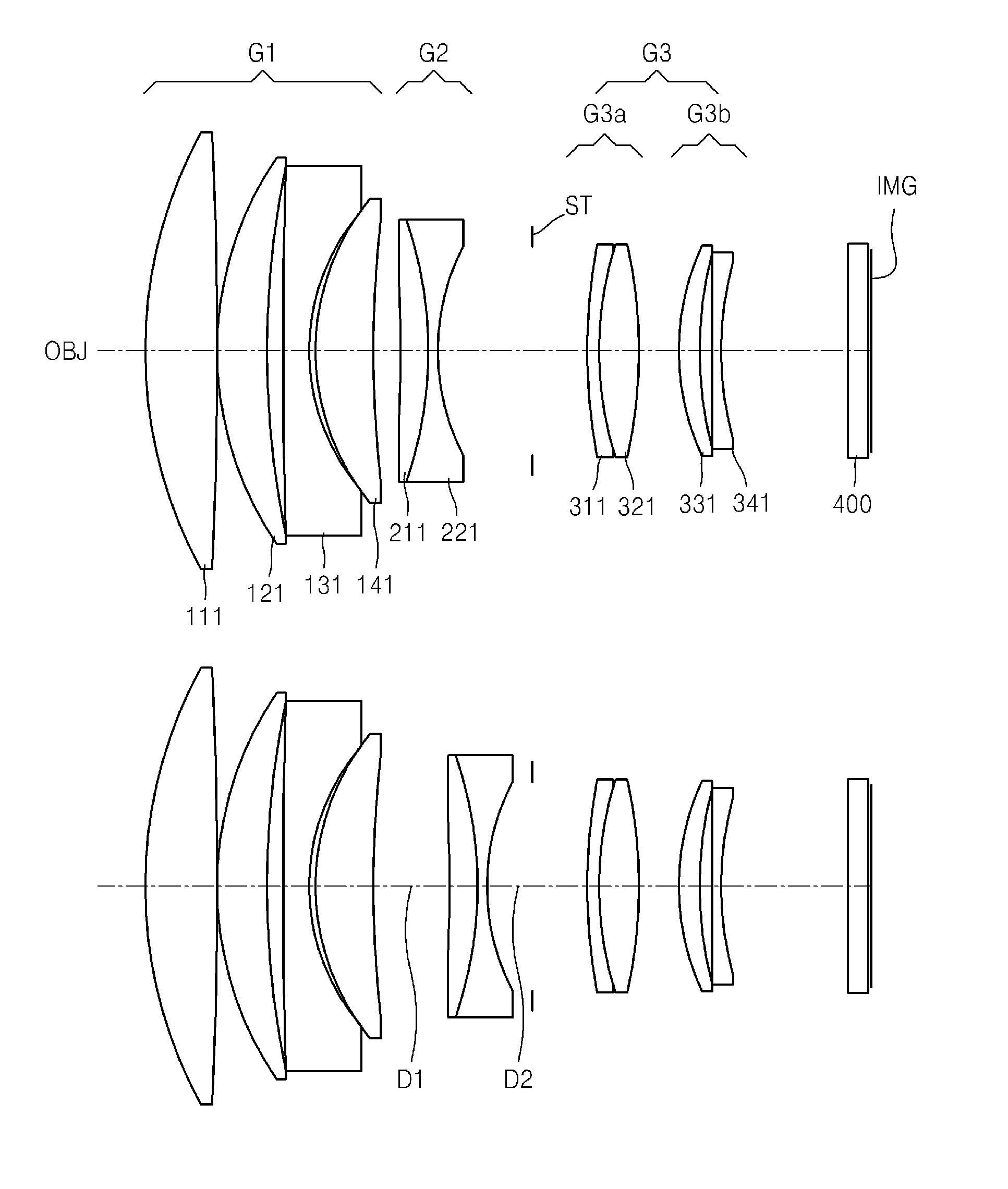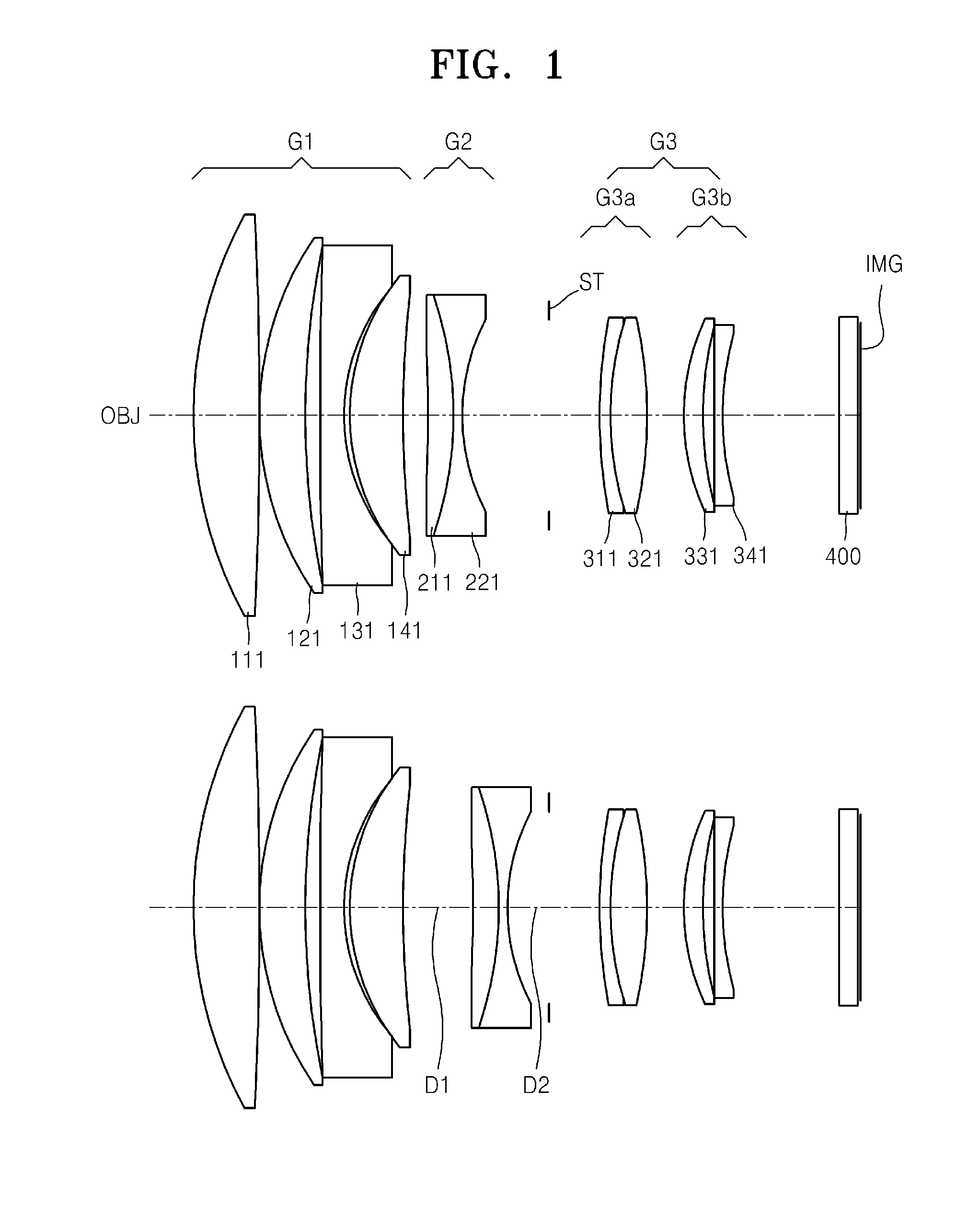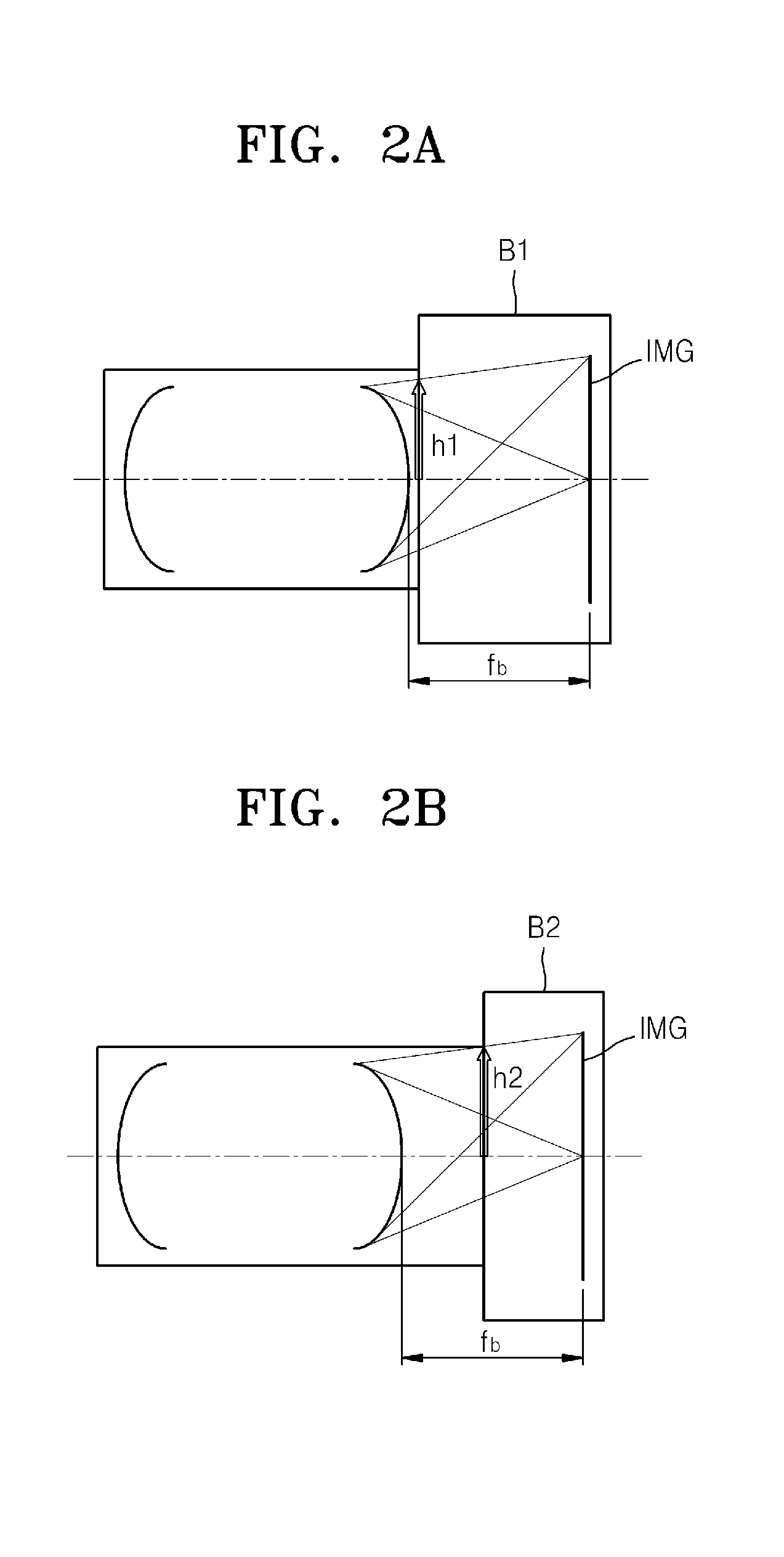Telephoto lens system
a telephoto lens and focusing type technology, applied in the field of telephoto lens systems, can solve the problems of insufficient brightness and weight reduction of telephoto lenses at the same time, and none of them can provide both sufficient brightness and sufficient weight reduction, so as to achieve the effect of reducing weigh
- Summary
- Abstract
- Description
- Claims
- Application Information
AI Technical Summary
Benefits of technology
Problems solved by technology
Method used
Image
Examples
first embodiment
[0090]FIG. 1 shows optical arrangements of a telephoto lens system according to a first embodiment of the invention at an infinite object position and at a closest object position. The telephoto lens system includes a first lens group G1 having a positive refractive power, a second lens group G2 having a negative refractive power, and a third lens group G3 having a positive refractive power. The first lens group G1 includes a first lens 111 as a positive lens, a second lens 121 as a positive lens, a third lens 131 as a negative lens, and a fourth lens 141 as a positive lens. The second lens group G2 includes a fifth lens 211 as a positive lens, and a sixth lens 221 as a negative lens. The fifth lens 211 and the sixth lens 221 are adhered to each other and form a doublet lens. The third lens group G3 includes the 3a sub-lens group G3-a and the 3b sub-lens group G3-b. The 3a sub-lens group G3-a includes a seventh lens 311 as a negative lens, and an eighth lens 321 as a positive lens, ...
second embodiment
[0094]FIG. 9 shows optical arrangements of a telephoto lens system according to a second embodiment of the invention. The telephoto lens system includes the first lens group G1 having a positive refractive power, the second lens group G2 having a negative refractive power, and a third lens group G3 having a positive refractive power. The first lens group G1 includes a first lens 112 as a positive lens, a second lens 122 as a positive lens, a third lens 132 as a negative lens, and a fourth lens 142 as a positive lens. The second lens group G2 includes a fifth lens 212 as a positive lens, and a sixth lens 222 as a negative lens. The fifth lens 212 and the sixth lens 222 are adhered to each other and form a doublet lens. The third lens group G3 includes the 3a sub-lens group G3-a and the 3b sub-lens group G3-b. The 3a sub-lens group G3-a includes a seventh lens 312 as a negative lens, an eighth lens 322 as a positive lens, and a ninth lens 332 as a negative lens, wherein the seventh le...
third embodiment
[0097]FIG. 16 shows optical arrangements of a telephoto lens system according to a third embodiment of the invention. The telephoto lens system includes the first lens group G1 having a positive refractive power, the second lens group G2 having a negative refractive power, and a third lens group G3 having a positive refractive power. The first lens group G1 includes a first lens 113 as a positive lens, a second lens 123 as a positive lens, a third lens 133 as a negative lens, and a fourth lens 143 as a positive lens. The second lens group G2 includes a fifth lens 223 as a negative lens. The third lens group G3 includes the 3a sub-lens group G3-a and the 3b sub-lens group G3-b. The 3a sub-lens group G3-a includes a sixth lens 313 as a negative lens, and a seventh lens 323 as a positive lens. The 3b sub-lens group G3-b includes an eighth lens 333 as a positive lens, and a ninth lens 343 as a negative lens. Lens data is as shown below.
EFL 85.01FNO 1.44SurfRDNdVd 162.34910.7241.6180063....
PUM
 Login to View More
Login to View More Abstract
Description
Claims
Application Information
 Login to View More
Login to View More - R&D
- Intellectual Property
- Life Sciences
- Materials
- Tech Scout
- Unparalleled Data Quality
- Higher Quality Content
- 60% Fewer Hallucinations
Browse by: Latest US Patents, China's latest patents, Technical Efficacy Thesaurus, Application Domain, Technology Topic, Popular Technical Reports.
© 2025 PatSnap. All rights reserved.Legal|Privacy policy|Modern Slavery Act Transparency Statement|Sitemap|About US| Contact US: help@patsnap.com



